The style and function of draperies largely depend on the fabric. Different curtain fabric materials have different characteristics. Understanding the features of each material can help you make wiser decisions.
Four characteristics of the best curtain materials
When you want to wholesale and customize curtains, it’s essential to know what factors to consider when choosing the curtain cloth types. Below I list 4 essential characteristics that the best draperies should have.
Yard Count and Density
Yard count refers to the thickness of yarn, usually used to indicate the weight of yarn within a specific length. A higher thread count indicates a lighter weight of yarn, meaning the yarn is finer. For example, a yarn with a count of 20 is finer than a yarn with a count of 10.
Density refers to the compactness of fibers in a fabric and is typically measured as threads per inch (Thread Count) or threads per centimeter (Threads per Centimeter). Higher density means the threads are tightly woven, resulting in a fabric that is softer and more durable.
In general, fabrics with higher yard count and density are considered high-quality, as the finer yarn and tighter weave provide better texture, softness, and durability.
Grammage
Grammage refers to the weight of fabric per unit area, usually measured in grams per square meter (g/m²). It directly affects the curtain’s light-blocking effect and drape.
Different fabrics may have varying grammatical ranges due to factors like fiber thickness and weaving techniques. For instance, linen fibers are coarser than cotton, making linen curtains generally more lightweight for the same size.
For a specific fabric, grammage impacts the curtain’s light transmission. A higher grammage means a thicker fabric, resulting in better light-blocking.
For example, pure linen curtains are available in various grammages like 160g, 220g, and 400g. A curtain with 160g grammage will allow light to pass through, creating a flowing and ethereal feel, while a 400g curtain offers enhanced light-blocking and a heavier texture. The 220g option strikes a balance between light-blocking and draping.
Functionality
The best material for curtains varies from person to person as their needs and preferences vary. Curtain functionality can include aspects like light blocking, decoration, and insulation.
“Shading rate” indicates the degree to which the curtain blocks light. It indicates how much light the curtains can block. This rate is influenced by two main factors: color and fabric. Curtains with darker colors can better block light within the same thickness and material. Additionally, using opaque fabrics can enhance the light-blocking performance of curtains.
Decorative curtains often use translucent materials. These materials not only brighten the interior but also combine with decorative elements to add more beauty and artistic flair.
Choosing curtain fabrics with moderate thicknesses is crucial for improving insulation. It can effectively block cold air from entering the room while reducing heat loss, providing a comfortable temperature indoors.
Flame Retardancy
Flame retardancy refers to the ability of the fabric to resist the spread of flame, that is, to prevent the curtain from burning rapidly in the event of a fire.
Considering the flame retardancy of curtain fabrics is crucial because some countries have specific flame retardant standards for home textiles, such as EN 13773 and NFPA 701. Therefore, it is best to purchase curtain fabrics from suppliers with these certifications.
Six fabrics for common curtains
Cotton

It is a natural fiber that is soft, breathable, and moisture-wicking. Cotton or cotton-blend are lightweight curtain fabrics that are suitable for creating a warm and comfortable home atmosphere. But 100% cotton is more prone to wrinkling and requires care and ironing.
Polyester
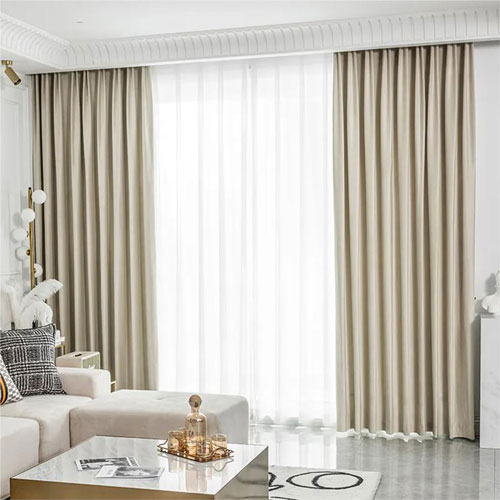
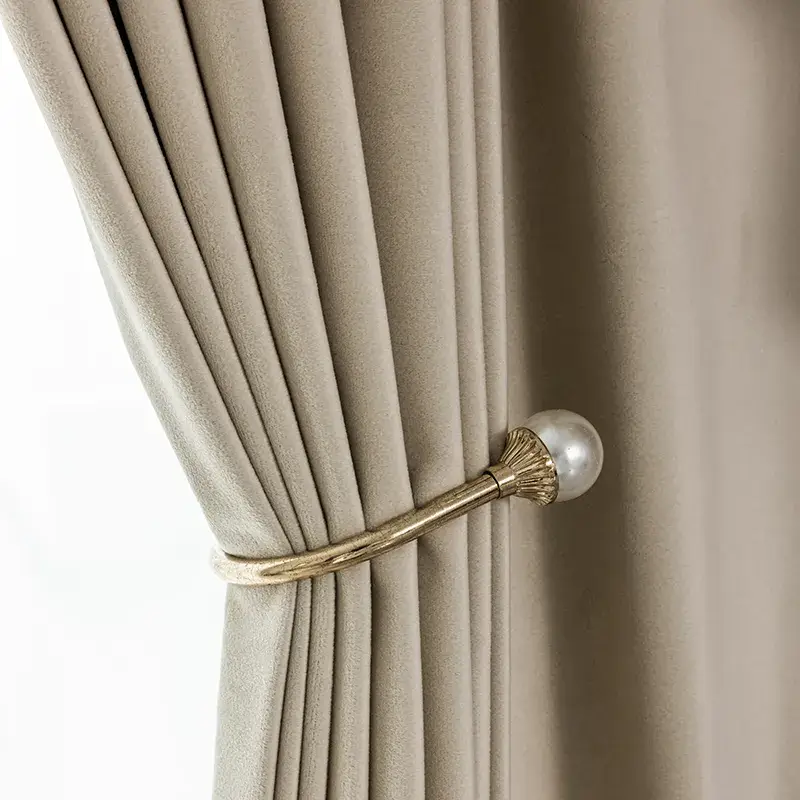
Polyester is a synthetic fiber that offers good durability and wrinkle resistance. Draperies made of this material often exhibit a smooth texture and present a simple and modern style. Moreover, they are easy to clean and maintain, making them an economical choice.
Velvet

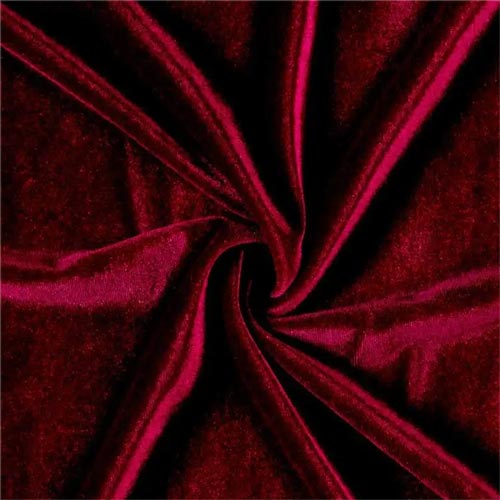
Velvet is a heavy curtain material with dense and short piles and fine weaving, characterized by a smooth and soft surface.
Draperies made of this material often exhibit a rich texture and shine, creating an elegant decorative effect. These curtains also provide insulation as they are thick and opaque. They are suitable for living rooms, bedrooms, and places with a warm and luxurious atmosphere.
Linen
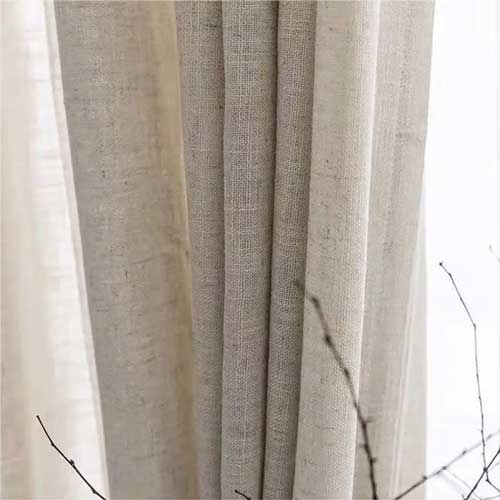
Linen is a natural fiber with many unique characteristics, including softness, breathability, and good moisture absorption, giving a sense of natural coolness.
Curtains made of this material often exhibit a light and airy texture, creating a fresh and natural decorative effect. These draperies are suitable for creating a simple and warm atmosphere, especially in places like living rooms and dining rooms. However, linen fabric is prone to wrinkles and requires proper care and ironing to maintain the beauty of the curtains.
Silk
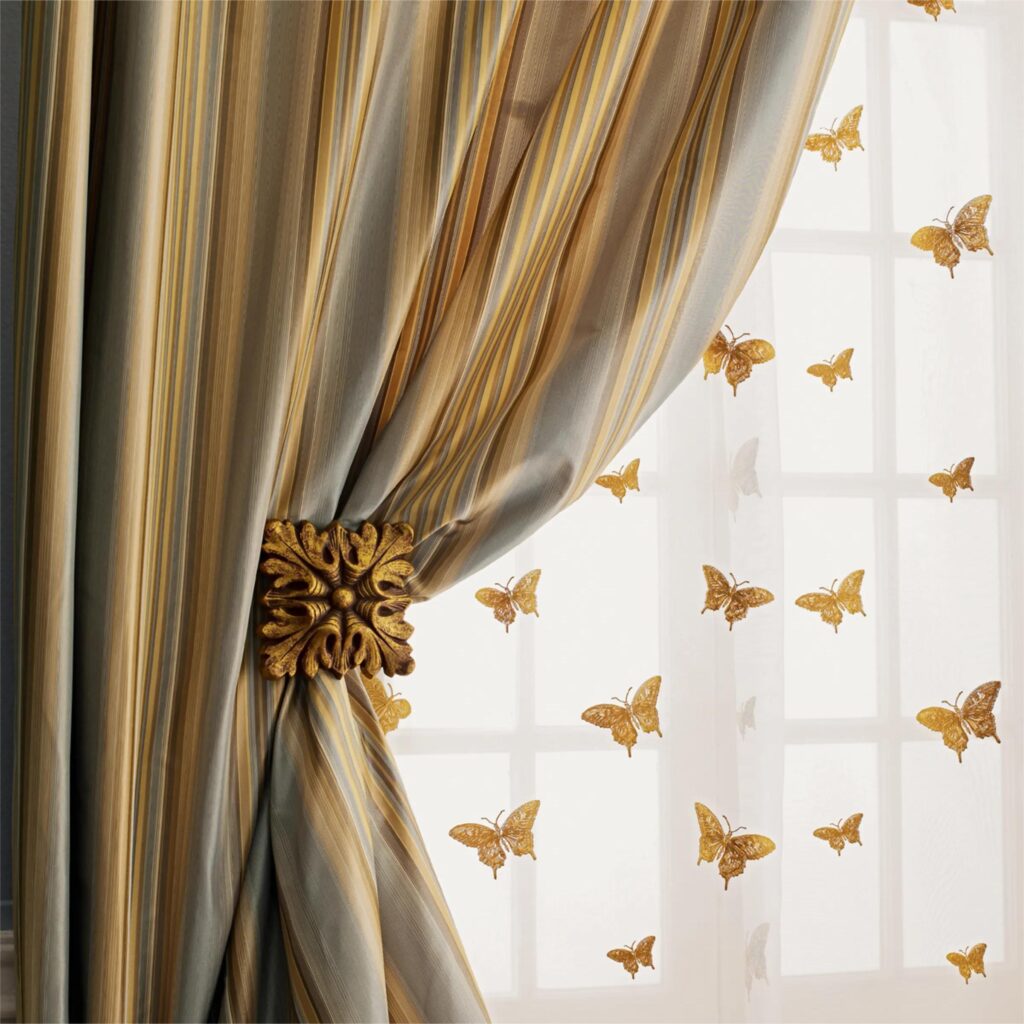
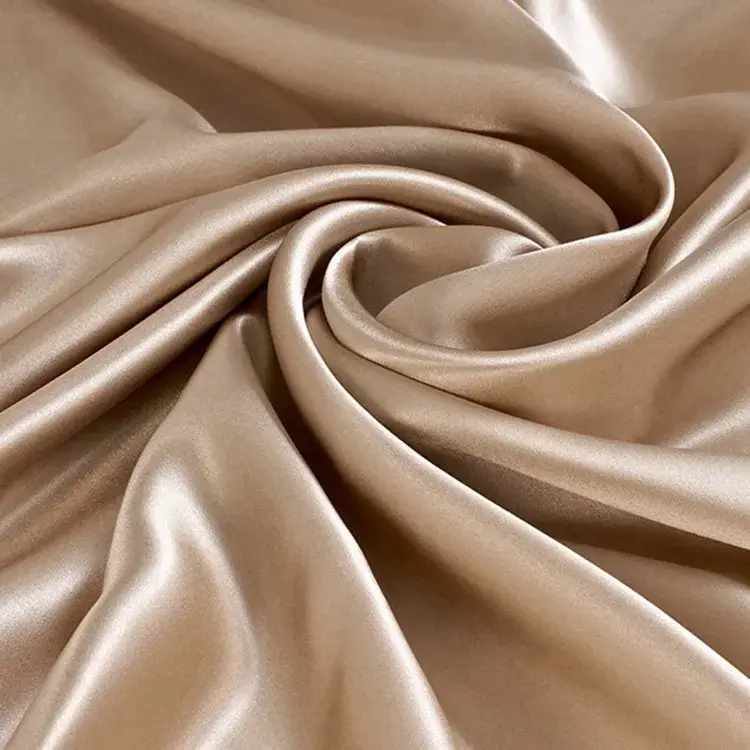
It is a luxurious and elegant natural fiber, widely used in high-end fashion and home decor, especially for curtains. Silk on the market mainly uses Dupioni fabrics with irregular fibers and a grainy texture, giving the curtains a unique shine and texture.
This fabric has many advantages but requires careful maintenance, avoiding direct sunlight and friction. Therefore, draperies made of this material are more suitable for less frequently used rooms like living rooms and bedrooms, or as decorative curtains rather than frequently used functional ones.
Bamboo
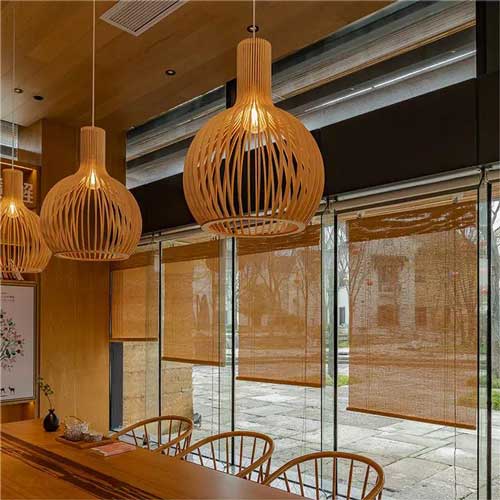
Bamboo is a natural fiber. As one of the oldest sunshades, bamboo curtains often exhibit a fresh and natural texture. These curtains have good breathability and antibacterial properties.
In many Chinese-style home decors, bamboo curtains are commonly used. Moreover, bamboo curtains can serve as window curtains, wall curtains, door curtains, or room dividers.
Six fabrics for sheer curtains
In addition, many curtain materials are translucent, primarily for decorative purposes. These materials are often used independently or in combination with other curtains to add layers and diversity to the window decor. Common options include:
Lace
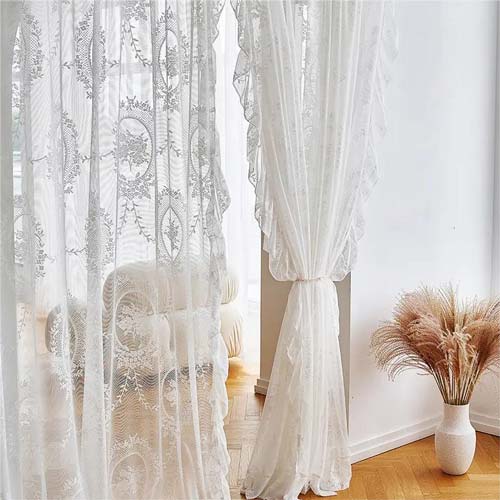
Lace is a delicate fabric characterized by its intricate and open weblike pattern, created with yarn or thread. It is widely used in different interior design styles, from traditional to modern and even vintage themes.
Whether used as standalone curtains or combined with other fabrics, lace can bring a sense of delicacy and refinement to any room.
Muslin

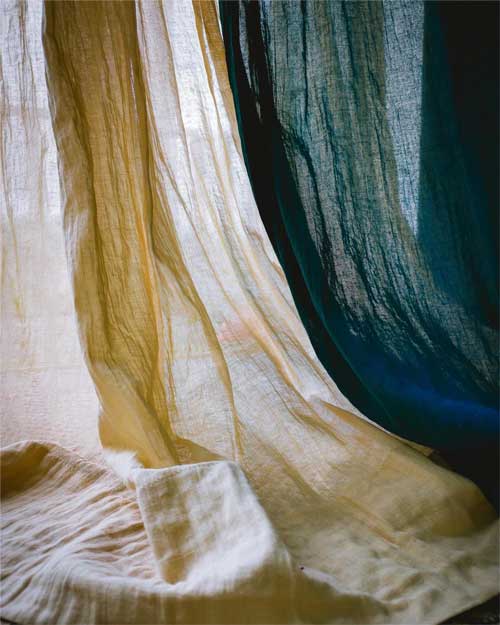
Muslin is a typical type of cotton fabric for curtains known for its plain weave. Curtains made from muslin are indeed very thin, transparent, delicate, lightweight, and breathable. The plain weave structure of muslin gives it a smooth and even appearance, making it an ideal choice for creating a light and airy atmosphere in a room.
Voile
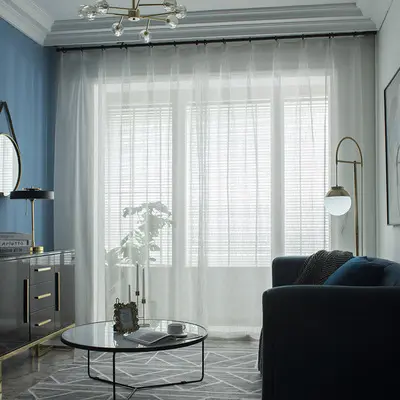
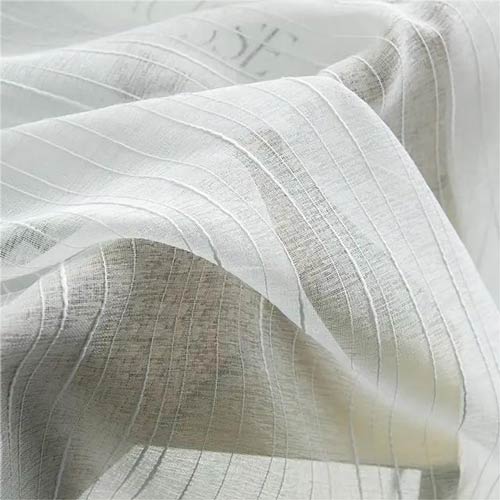
Voile is a soft, lightweight, and transparent woven fabric, usually made of 99% cotton or cotton blended with linen or polyester. Despite its transparency, Voile also offers a certain level of privacy indoors.
Whether used alone or in combination with other curtain fabrics, Voile adds layers and diversity to window curtains.
Organza
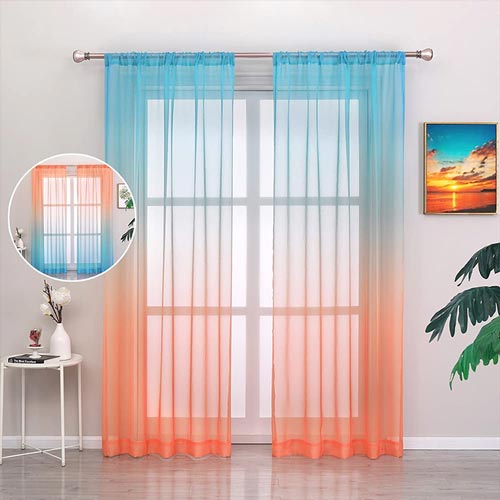
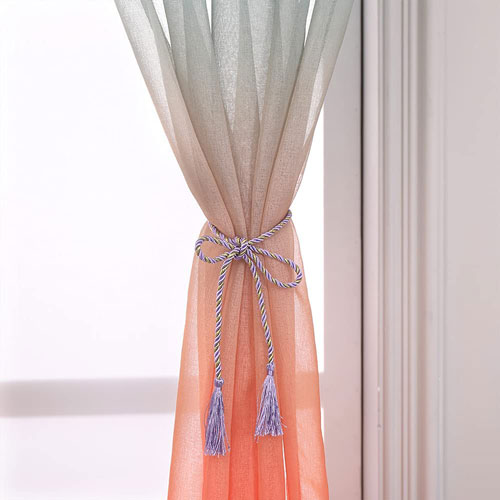
Organza is a thin, plain weave, sheer fabric traditionally made from silk. Many modern organzas are woven with synthetic filament fibers such as polyester or nylon. This type of material is often used for decorative curtains, especially on occasions where a refined and elegant ambiance is desired.
Gauze


Gauze is a lightweight and transparent fabric with a mesh-like weave resembling a net. Curtains made from this fabric usually exhibit a semi-transparent or fully transparent appearance, offering excellent breathability and light permeability.
Chiffon

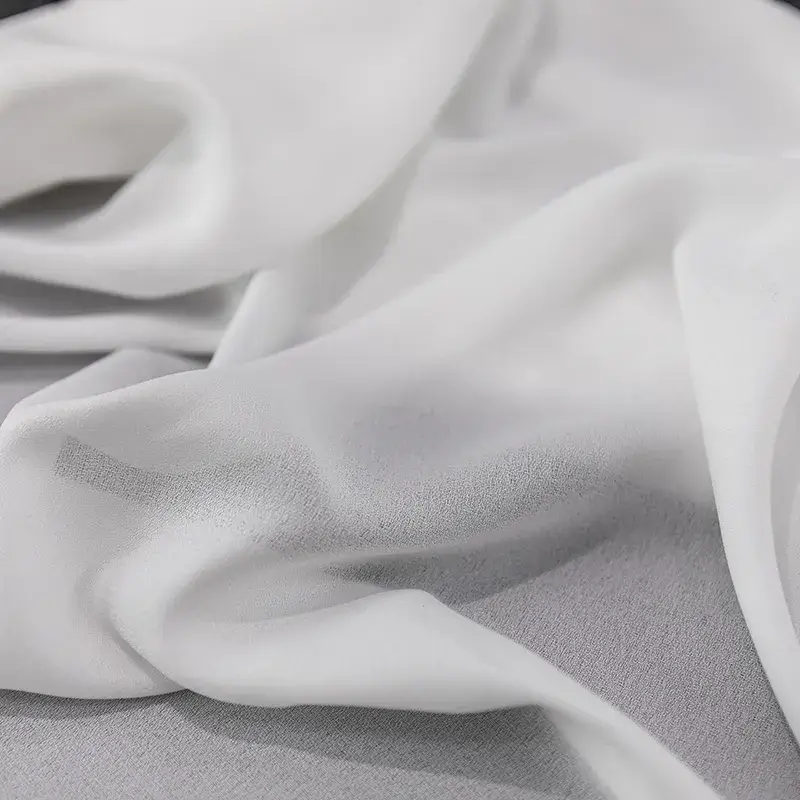
Chiffon is a lightweight fabric, typically made from ultra-fine silk, polyester, nylon, or cotton blend fibers. It has excellent breathability, allowing air circulation while filtering sunlight and heat, creating a relatively cool environment. Additionally, chiffon is easier to maintain and clean.
As a leading sourcing company in China, JingSourcing has helped lots of importers wholesale and customize curtains and curtain accessories.
We are familiar with drapery fabric types and can choose the one that best meets your requirements. We also support various techniques such as printing and embroidery to present patterns on the fabric to create your unique curtain style.

Leave A Comment